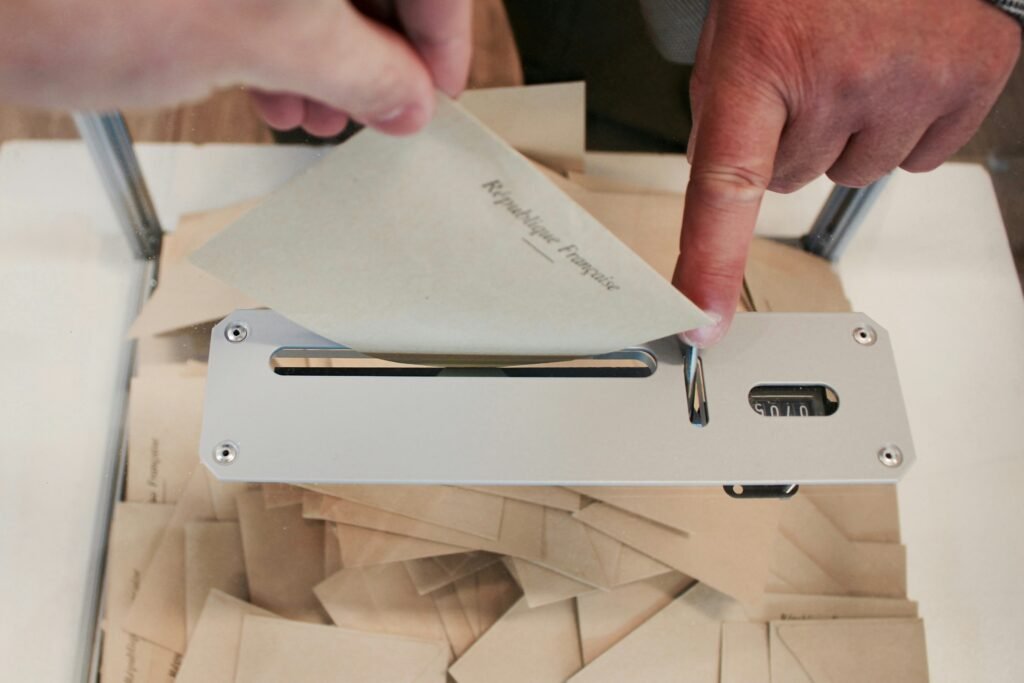Voting behavior of US: with the preference of time

ABSTRACT
The history of Voting behavior of US is a complex narrative shaped by diverse political, social, economic, and cultural factors. This overview traces significant trends and shifts in U.S. voting patterns from the limited ballot of the 18th and 19th centuries to recent developments, acknowledging the influence of historical events, party politics, and societal changes.
The literature review highlights key contributions from prominent authors, ranging from V.O. Key Jr.’s exploration of responsible voter rationality to contemporary studies on demographics, income inequality, and racial politics. These works contribute to a comprehensive understanding of the multifaceted nature of U.S. voting behavior.
The theoretical framework underscores the challenges of analyzing voting behavior year by year due to limited detailed information. However, it emphasizes the value of qualitative research, examining pivotal periods such as the Civil Rights Movement, the Reagan era, and the impact of the Internet age.
Objectives in studying U.S. voting behavior encompass understanding voter preferences, analyzing demographic patterns, exploring partisan loyalty, investigating issue voting, and assessing voter turnout. These objectives serve academic and practical purposes, providing insights into political strategies and policy considerations.
The Frequently Asked Questions (FAQs) delve into various aspects of U.S. voting behavior, addressing factors influencing millennial votes, the role of party identification, media impact, regional differences, and economic considerations.
In conclusion
This comprehensive overview illuminates the intricate tapestry of U.S. voting behavior, offering insights into historical shifts, influential literature, theoretical considerations, research objectives, and common queries. As the political system changes, research remains important in uncovering new patterns and understanding the evolution of American democracy.
The history of Voting behavior of US is an exciting journey filled with countless interactions, including political, social, economic, and cultural events. Unraveling this complex tapestry reveals the underlying trends that have shaped America’s electoral patterns for centuries. The evolution of American democracy, from elections in the early 18th century to modern challenges like the global pandemic and civil rights debates, is a testament to its patience and adaptability.
This expansion expands in the background and acknowledges societal changes affecting leadership, election expansion, political parties, and voting behavior. Each time, it left an indelible mark on voters as the country overcame the early limitations of the radical changes brought about by the rise of the party machine and the public policy drive.
When researching history, the analysis of documents focuses on the researchers entering the brain and the reason behind the selection decision. V.O. The work of fixtures such as. Key Jr., Anthony Downs, and John Zaller, among others, contributed to a better understanding of the thoughts and feelings of the American electorate.
Theoretical Frameworks confront the challenges inherent in analyzing voting behavior each year and underscore the importance of good research in identifying pivotal moments such as the Civil Rights Movement, the Reagan Era, and the dawn of the Internet Age. Although the data quality changes over the years, these historical moments can serve as a litmus for political change.
As the study progresses, specific goals become clear, guiding scientists, researchers, and policymakers to demystify the political sphere. The complexity of American voting behavior. These goals include understanding voter preferences, identifying demographic patterns, researching loyal candidates, researching voting issues, and analyzing trends affecting voters. These goals are based on academic curiosity and practical application and provide insights that inform political and policy development.
The Frequently Asked Questions (FAQ) section discusses today’s issues, such as the influence of the millennial generation, the role of party identity, advertising, regional differences in social media, and economic considerations on voting behavior. This question sheds light on the ongoing debate around various events of the American electorate.
This study aims to better understand voting behavior in the United States by combining historical perspective, empirical data consideration, critical thinking, research objectives, and questions. The nature of politics ensures that this investigation is not a routine operation but a journey into the heart of American democracy.
HISTORICAL BACKGROUND
Assaying the history of voting gets :
Time-by-time is a complex task in the United States due to the multitudinous factors that impact choices, including political, social, profitable, and artistic dynamics. Still, I can give a broad overview of some crucial trends and shifts in U.S. voting. Early Times (18th and 19th centuries) Limited suffrage Voting was initially confined to white, manly property possessors. Prejudiced press journals were bigoted, impacting name opinions. Substantial indigenous differences in voting patterns are frequently aligned with indigenous interests.
Late 19th to early 20th Century Expansion of franchise The 15th Correction (1870) banned ethnical demarcation in voting, and the 19th Correction (1920) granted women the right to bounce. Rise of party machines Political parties played a significant part in marshaling choosers.
New Deal Era( 1930s- 1940s) profitable factors The Great Depression and New Deal programs told advancing patterns. Widespread dominance of the Democratic Party’s strength increased, especially with support from labor unions and nonage groups.
Post-World War II( 1940s- 1950s) Suburbanization Growth of cities told political stations. The rise of T.V. political juggernauts acclimated to the new medium, affecting name engagement. Civil Rights Movement shifts are advancing patterns due to racial issues.
1960s- 1970s Civil Rights Act( 1964) and Voting Rights Act( 1965) Significant impact on African American voting patterns. Vietnam War Anti-war sentiments told advancing gets
. Southern realignment Shift of Southern countries from Popular to Republican.
1980s- 1990s Reagan Era Republican juvenescence under Ronald Reagan. Evangelical influence Increased the participation of religious rightists in politics. Immigration issues Influence advancing patterns, particularly in border countries.
2000s- 2010s Polarization adding ideological division between Egalitarians and Republicans. Technology impacts social media’s role in shaping political opinions. Demographic changes are the growing influence of Hispanic and other nonage choosers—Obama Era primary election of Barack Obama in 2008.
Recent Trends (2016- 2020) Populism Rise of populist sentiments, as apparent in the 2016 election. Social issues Debates over issues like healthcare, immigration, and gun control. Epidemic impacts The COVID-19 epidemic told voting styles and precedences. Remember that individual choices may have unique factors affecting them, and the political geography is continually evolving. Also, state-position variations and the Electoral College system contribute to the complexity of U.S. voting analysis.
LITERATURE REVIEW
How to vote while studying in the United States:
is a multidisciplinary program that includes intelligence, leadership, thinking, and communication. Many writers have made significant contributions to United States literature. Voting Movement There are also essential writers and their meetings in the KeyJr area.
The book “Responsible Voter Rationality in Presidential Votes, 1936-1960” by V.O. The key position forms the basis for understanding Namer’s geste about the emotions of people making choices in the decision-making process.
Anthony Downs
In his book “The Economic Theory of Democracy,” he introduced the concept of rational choice to explain elections, proposing that voters choose according to the soundtrack and progress. Source of Home Style Membership Richard Fenno Fenno’s work focuses on the relationship between representation and its objects, showing the unique connection and original problems associated with Forward Style< br>. The work published by The American Voter by Angus Campbell, Philip E. Converse, Warren E. Miller, and Donald E. Stokes is often called the “Michigan Model.” The “name gesture” analysis emphasizes the importance of party identity and unity.
John Zaller’s book The Nature and History of Popular Opinion John Zaller’s work explores the power of public opinion formation and how people use information to influence and shape political preferences.
Ruy Teixeira and John B. Giudice’s Book “The Rising Democratic Majority” Teixeira and Judith Bandy’s Demographic changes and their adverse effects on elections, especially on growing age groups. Morris Fiorina’s book Retrospective Voting in America’s National Election explores the portion of retrospective voting in which voters share their thoughts on evaluating a candidate’s performance.
Larry M. Bartels’ book Unstable Republics: The Economics of the New Gilded Age Bartels’ research focuses on the relationship between income inequality and politics, as well as structural choices.
Donald R. Kinder and Lynn M. Sanders’ book, Color Racial Politics and Popular Ideas by Kinder and Sanders, examines the role of race in electoral politics and politics. Ellen I. Abramowitz’s Book Decline Center Engaged Citizenship, Polarization, and the American Republic Abramowitz’s book addresses the growing Polarization in the United States. Politics and its impact on the naming movement. These authors and their meetings provide a solid foundation for understanding the richness and diversity that makes up the United States. Voting Movement
.Note that the field is fragile, and new research constantly improves our understanding of selection bias.
THEORETICAL FRAMEWORK
The quality of data on American voting behavior can be difficult to analyze from year to year due to the lack of detailed information on the quality of the studies included in each year. However, qualitative research often focuses on a single election or period. Some of the topics and themes examined in significant studies over the years include:
1950s-1960s: Civil Rights Movement and Voting Rights Act:
Qualitative studies from this period often examine Legislation. The House’s legal status influences voting behavior, especially among African Americans. The Voting Rights Act of 1965 was an essential moment in this context.
The 1980s: The Reagan Era and the Rise of the Conservatives:
Qualitative research can explore changes in voting during the Reagan era by examining the role of appealing to conservative values and social issues.
1990s: Third Party Dynamics and Elections:
A good analysis would focus on the impact of third-party candidates like Ross Perot on bus behavior. The effect of electoral reforms, such as changes in fiscal laws, can also be investigated.
2000s: Post-9/11 Politics and the Internet Age:
Promising research in this era could explore the impact of the 9/11 attacks on voter behavior and the role of the Internet and social media. Media. Media in shaping its political role
2010: Tea Party Movement and Polarization:
Positive research will provide insight into the emergence of the Tea Party movement and its impact on voting behavior. Increasing Polarization between Democrats and Republicans will also be a significant issue.
2020: Global Pandemic, Social Justice:
A good study will investigate how the COVID-19 virus affects elections and what is essential. The impact of social justice and electoral justice debates can also be explored.
To get good information about U.S. voting behavior in a particular year, you may want to look specifically at the fields of Political Science, Sociology, and Communications. Qualitative research often includes in-depth interviews, focus groups, content analysis, and case studies to better understand voters’ attitudes and behaviors.
Also, consider the Pew Research Center’s frequent and well-researched surveys of various aspects of American culture. Note that the availability of suitable data varies, and not every year has an excellent study of voting behavior.
OBJECTIVES:
The objectives of studying U.S. voting behavior are multifaceted and aim to understand the complex factors influencing how individuals make electoral decisions. Scholars, researchers, and policymakers pursue several key objectives when studying voting behavior in the United States: Understanding Voter Preferences:
Goal: To comprehend why voters make confident choices in elections.
Rationale: By understanding voter preferences, analysts can assess the factors that drive electoral outcomes and tailor political strategies accordingly.
Examining Demographic Patterns:
Objective: To identify how different demographic groups vote and whether there are discernible patterns based on age, gender, race, and socioeconomic status.
Rationale: Recognizing demographic trends informs political campaigns and helps policymakers address the concerns of specific voter segments.
Analyzing Partisan Loyalty:
Objective: To explore the extent to which voters exhibit loyalty to political parties.
Rationale: Understanding partisan loyalty is crucial for predicting election outcomes and assessing the impact of party platforms on voter behavior.
Exploring Issue Voting:
Objective: To understand how voters prioritize and decide based on specific policy issues.
Rationale: Identifying key issues helps political actors address voter concerns and build platforms that resonate with the electorate.
Investigating Voter Turnout:
Objective: To examine factors influencing voter turnout, such as civic engagement, polling access, and political mobilization efforts.
Rationale: Understanding voter turnout is crucial for assessing the health of democracy and identifying barriers to political participation.
Overall, the study of U.S. voting behavior serves both academic and practical purposes, contributing to a deeper understanding of the democratic process and informing strategies for political actors and policymakers.
FA/QS
Question: What Factors Influence the Votes of Millennial Americans?
Answer: Millennials’ voting behavior can be influenced by many factors, including financial concerns, social justice issues, education, and digital media use.
Question: How does party identification affect the popular vote in America?
Answer: Party identification is essential in shaping voting decisions; people often align their votes with their constituents. It has grown and been influenced by family history and social and regional economics.
Issue:
Question: What is the role of the media in choosing behavior in the United States?
Answer: Social media is a platform for political education, information dissemination, and advocacy. It can influence voters, especially young people, but its impact may vary depending on the platform and the nature of the content.
Problem
Question: How do regional differences affect voting patterns in the United States?
Answer: Regional differences, such as urban-rural disparities or differences in economic development, can affect voting behavior. Voters in different districts may prioritize other issues, leading to different elections.
Question: How do economic factors such as income and employment affect voting decisions?
Answer: Economic characteristics can affect voting behavior. In a panic where factors such as job security, income levels, and economic inequality play a role, people can vote according to their views on the economy.
CONCLUSIONS OF Voting behavior of US:
A historical look at voting behavior in the United States shows the interaction of many factors, including changes in voting patterns, economics, technological progress, and social spheres. From the economic restrictions of the 18th and 19th centuries to the modern era of Polarization and the influence of technology, the voting landscape in the United States has changed dramatically.
The principal authors and contributions were mentioned in the literature review, including Key Jr.’s speech. The role of voting is underpinned by recent research on demographic change, economic inequality, and the impact of social media. These scholars provide valuable insight into the diverse web of events influencing elections in the United States.
The theoretical framework highlights the problems in analyzing voting behavior over the years due to the lack of detailed research for each period. Good studies highlight specific historical periods and their impact on voter behavior, examining issues such as civil rights, corporate governance, and the role of third parties.
The study of voting in America aims to examine voters’ behavior, emphasizing the importance of understanding voter preferences, demographics, party trust trends, voting issues, and voter turnout. These goals serve educational and practical purposes, leading to a better understanding of the democratic process and paving the way for leadership.
She frequently Asked Questions (FAQ) on aspects of U.S. voting behavior, from the influence of millennials to the role of social media to regional differences. These questions offer a compelling answer that acknowledges the complexity and diversity of the American electorate.
In summary, studying voting behavior in the United States is complex and multifaceted. Historical background, literature review, theoretical frameworks, objectives, and FAQs combine to provide a comprehensive understanding of the complexity of the U.S. election system. As the political economy evolves, research remains essential to uncover new patterns and trends in voting behavior in the United States.
Visit: Timebuissnesnews.com






